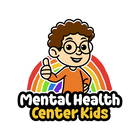A study published in the BMJ looked at a new online program called SPARX (Smart, Positive, Active, Realistic, X-factor thoughts) that supports adolescents in managing depression. It involved 187 teenagers ages 12 to 19 who needed help with their symptoms.
What the researchers did was compare SPARX with the usual approach of face-to-face counseling provided by trained professionals. The results are encouraging for families: teens who used SPARX showed improvements in their depressive symptoms.
These improvements were at least as good as, and in some cases better than, those who received traditional therapy. Notably, more adolescents using SPARX reached full remission.
Why does this matter for parents? Mental health care can sometimes be difficult to access. Appointments may be full, and trained professionals aren’t always easy to find. Programs like SPARX give teens a flexible, evidence-based alternative to receive support from home.
Understanding the Research
SPARX is a computer-based therapy program designed like a video game to help teens manage depression. It teaches skills from cognitive behavioral therapy (CBT), such as recognizing negative thoughts, coping with strong emotions, and solving problems. These are all provided via interactive modules.
The participants were randomly assigned to either SPARX or standard therapy with trained counselors or psychologists. Teens in the SPARX group completed 7 modules over 4 to 7 weeks. In the game, they were able to create an avatar, face challenges, and learn to replace negative thoughts with more realistic ones.
The researchers measured depressive symptoms before starting, immediately after finishing the program, and three months later using tools like the Children’s Depression Rating Scale-Revised.
They also looked at teens’ anxiety levels, feelings of hopelessness, and satisfaction with the program. This allowed them to compare SPARX with traditional therapy across multiple areas of mental health.
A number of important findings came out of the study, particularly those that resonate with parents who are hoping for effective resources for their teens:
- Many teens got better using SPARX. Around 66% responded to treatment, and 44% had their depression in remission. These results are similar to other proven depression treatments for teens, such as standard CBT and antidepressant medication.
- Teens stuck with the program. 86% of the teens completed at least four SPARX modules, and 60% completed all seven. (Those who did not finish the modules usually encountered issues like not having enough time or losing interest.)
- SPARX had lasting effects on teens. Three months after finishing SPARX, improvements in mood, anxiety, and hopelessness were still evident.
- Most teens liked using SPARX. They found it helpful and even believed that it would appeal to other teens. They also said that they would recommend it to friends. Many appreciated being able to work at their own pace and complete sessions at home or school.
- Those who started out with higher levels of depression showed greater improvement with SPARX compared to teens receiving standard care. This tells us that SPARX can be especially helpful for youth who are struggling the most.
Practical Strategies for Parents and Caregivers
Knowing there are effective, flexible tools like SPARX and similar programs is reassuring. If you’re wondering how to support your teen at home using SPARX or other helpful depression resources, here are some tips:
Help your teen set up a calm space at home
This should be a place where they can focus on online programs or mental health resources without interruptions. That way, they can fully engage with the content and practice coping skills effectively. A quiet corner in the living room or a small desk in their bedroom can work well.
Check in on their progress
You can ask your teen open-ended questions about what they’re learning and how it is helping them. For example, if they’re using a handout on coping statements, you might ask, “Which of these statements do you think you’ll try first?” or “Can you tell me which statement felt most helpful today?”
Support healthy habits
Encourage daily routines that boost mood, such as getting enough sleep, eating balanced meals, and staying active. These habits can help your teen feel more energized, manage stress, and get the most out of programs like SPARX or other mental health resources.
The researchers suggest investigating whether SPARX works well for other age groups and whether it is a cost-effective option.
If you’re interested in exploring the benefits of SPARX for your teen, feel free to check it out here. SPARX is free for youth in New Zealand, but US teens can access a demo version. Some features may be limited to US families, and you may need to contact them via their website for full access.
Help your child or teen reflect on their experiences and practice coping skills at home with our Depression Worksheets.





















































